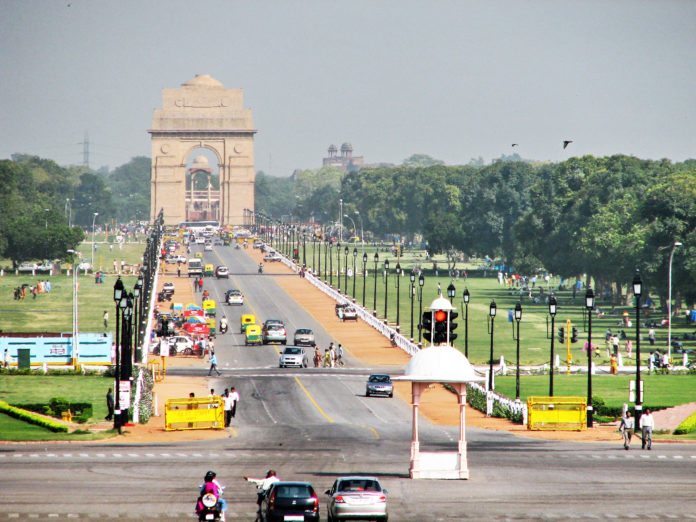Safer and more connected public transit along with a regulation on taxi apps is the need of hour than addition of more taxis on our clogged roads. This will not only make our cities cleaner, greener but also improve the quality of life of its citizens.
By Harsimran Julka
Drive on Delhi’s roads these days and you would feel a difference. Or if you don’t drive, do open a Google Traffic map and see green coloured roads instead of dark red marking the capital’s arteries.
The sudden disappearance of over 150,000 yellow plated commercial taxis aggregated by taxi startups Ola and Uber has suddenly seemed to made traffic flow smoother. The strike by drivers has entered its sixth day with none of the parties backing down. Drivers are asking Ola and Uber to immediately stop attaching more cars, hiking incentives and stopping pooled rides. The strike has been successful.
The capital’s arterial roads which used to have cars with bumper to bumper traffic, now remain almost clear with a steady flow.
Delhi metro has seen a rise of about 6.5 percent in its traffic due to the current strike by drivers working with taxi apps Ola and Uber.
Usage of public transport – namely auto rickshaws, metro and public buses has risen.
The air quality index has also improved to over 281 from the hazardous levels of over 400 last month in January.
The smoothened traffic flow seems to debunk the reasoning put forth by taxi apps especially Uber that they reduce pollution and traffic in cities they operate around the world.
Can we attribute the smoothened traffic flow and increased level of air quality just to the disappearance of over 150,000 cabs from the city? Let’s analyse the data:
Rising number of vehicle registrations in India’s national capital
Every day in Delhi, its regional transport offices see registrations of over 950 vehicles.
Every single day in the fiscal year 2015-16, Delhi saw 31 new cabs being registered, as per data made available from Delhi Government.
The number of commercial vehicles in India’s capital has reached a staggering 3,93,100 which is more than the entire population of Maldives. As opposed about 180,000 vehicles were registered up to 2011-12.
Of course there has been an increase in migration to the city of youth searching for jobs or families migrating in search of a better life.
As a result, the total vehicular population of all kinds (includes two-three and four wheelers) in the city (private and commercial) has increased to 97,047,41. That’s almost a vehicle each to each citizen of ‘Delhi’ not counting those who live in satellite towns of Noida, Ghaziabad or Gurgaon.
About 61,04,070 two wheelers exist in the capital which is more than the entire population of Singapore.
In last decade or more, while colonies became urban slums, with increasing number of parking wars between its denizens, roads also became clogged. Banks and finance companies more easily finance a car than a loan you wish to take to pursue education.
Rising number of cars and taxis have also led to deaths. Ambulances regularly get stuck on the city roads and often people die while on way to hospital. Ambulance drivers have resorted now keep blaring megaphones inside vehicles from which they shout out loud when a patient is dying in the van while stuck in traffic.
No regulation has also impacted the environment. The air quality index is Delhi recorded on January 1, 2017 was 344.

However, the cab strike has made it to its sixth day in a row, the AQI has come down to 281 as of February 16. This made air a bit safer to breathe for its citizens.
The Ola and Uber model
Taxi apps have tied up with companies such as Tata Motors, Maruti Suzuki, Mahindra, Toyota, Honda and Datsun. Thus all an immigrant to the city has to do is to arrange a commercial driving license, about Rs 25,000 and a police verification and a brand new cab is yours.
Taxi app startups issue a guarantee letter for benefit of intermediary finance companies stating the driver is leasing the vehicle on the basis of getting it attached with the startup. This gives confidence to financing companies of an assured EMI.
Over 91,000 new vehicles got registered in Delhi alone in 2015-16, mostly to attach themselves with the taxi aggregators.
However 91,000 does not sound as too big a figure in a city which has about 29,86,579 cars registered.
Here is what Ashok Vashishtha, owner of WTi Cabs and a rival to both Ola and Uber told me:
“Even if about 1 lakh cabs of taxi aggregators are out on roads each day they roughly translate it into 8 lakh cab hours on road, assuming a cab driver drives at least 8 hours to earn his livelihood. This increases traffic flow dramatically. A private car owner only takes out cars for driving from point A to B – thus the traffic is lesser.”
Thus the 8-10 lakh cab hours each day contribute to more pollution in addition to clogged roads, road rage, deaths and declining quality of living.
The Travis Kalanick Argument
Ola and Uber have an interesting argument to make about reducing traffic and pollution. Uber CEO in a recent visit to New Delhi gave a presentation on how if each citizen of a city started to carpool it would lead to lesser pollution and traffic. He also cited what Los Angeles looked in its heydays of development and why more taxis than private cars can do good.
The argument stands flawed. By reducing cab fares lower than a public transit cost, all a startup can do is incentivise people to take more taxis than buses or train and auto rickshaw rides. However the roads in a city have a limit. And unlimited addition of taxis and cars can only lead to more chaos.
When public transit cannot compete with private enterprise in terms of cost or usage, disruption happens. Not only of transport industry but also of environment and standard of living of citizens.
An auto rickshaw ride in Delhi costs Rs 14 a km with a base fare of Rs 25. However compare it with an Ola Pass ride on cab-sharing basis and you pay just Rs 6 per kilometer for a distance of 8 kilometers.
Uber has claimed repeatedly this argument
“In its first month, riders in Delhi NCR who used Uberpool contributed to save around 1.7 million kms driven which equals a saving of 84,000 liters of fuel and cut over 198,000 kgs of CO2 emissions,” said a recent statement by Uber. However what Uber missed out disclosing is the number of new cabs added on the city’s roads for the period and an average time a cab spends each day on the road in the city.
Is there a way out of the traffic mess?
Considering about 100,000 drivers of the 150,000 drivers are running their cabs on EMI – they took a loan to buy their car, there is no way a government can afford to make them jobless.
However, there needs to be regulation on the number of cabs that a transporter or app can attach with itself. There has to be a regulation on the number of registrations allowed in the city – both of private and public cars.
Car financing has to become tougher. There needs to be a mandate on production of a municipal parking slot registration for buying any car or cab. Finally, there has to be a pressure upon the civic authorities to make public transit safer, more connected and such that people can rely on any hour of the day or night.
Taxi apps have to learn to listen to the regulator and the driver who give them business.
Safer auto rickshaws, trains, cabs and buses along with a regulation on taxi apps is the need of hour than addition of more taxis on our clogged roads.
This will not only make our cities cleaner, greener but also improve the quality of life of its citizens.
(This is an opinion piece)
The article was published in moneycontrol.com












